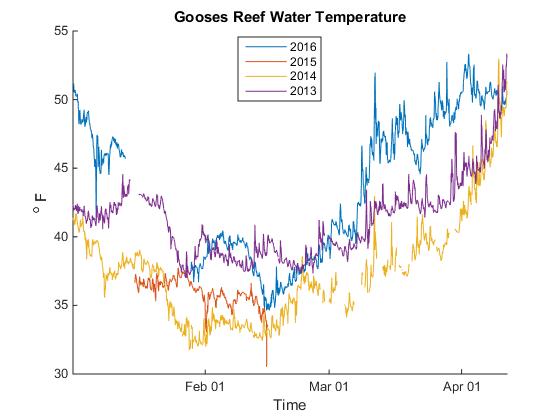April 16 is a big day for anglers seeking big rockfish this year—that’s when the Maryland spring trophy striped bass (rockfish) season opens. From then through May 15, fishermen in Maryland can harvest one fish per day with a minimum size of 35 inches. A similar season runs May 1-June 15 in Virginia’s Chesapeake Bay waters; minimum size there is 36 inches. (Be sure to check with resource managers in Maryland, Virginia, and the Potomac River to make sure you understand all the regulations.)
Some rockfish (Morone saxatilis) can be found year-round in the Chesapeake Bay, but most spend their winters in warmer waters off Virginia and North Carolina. Each spring these migratory striped bass return to the Chesapeake to spawning grounds in the Bay’s tributaries. Many anglers note that a water temperature of 50 degrees is about when they start seeing striped bass moving up the Bay.
Once they have spawned, they swim back down and out of the Bay and head north for cooler waters along the Atlantic coast and join the rest of the “coastal stock” of striped bass. Among other factors, water temperature plays a large role in the timing of this migration and helping these fish select their habitat—where they choose to spend their time—as they move through the year.
Depending on water temperatures, spring trophy rockfish seasons can happen when a majority of the migratory spawning striped bass are headed up the Bay to spawn—or when they are on their way back out of the Bay. In some years, a colder winter can delay their arrival to the Bay, as they wait for the waters to warm for prime spawning conditions; this was likely the case in the springs of 2014 and 2015 after winters where much of the Bay froze.
2016 is shaping up to be a different experience than last year, but it remains to be seen how that will affect the rockfish migration. The graph below tracks water temperatures at the Gooses Reef CBIBS buoy in January-early April in 2013 (purple line), 2014 (yellow), 2015 (red), and 2016 (blue) highlighting the difference in temperature between the two years. While water temperatures in the early part of the year varied, in 2013, 2014, and 2016 (buoy was out of the water in 2015 due to ice damage), the water temperatures all converged in early April right around 50 degrees.

What does the 2016 spring season hold? Time will tell, but tracking water temperatures at CBIBS buoys up and down the Bay will certainly help fishermen as they plan their days on the water and track how things variables like winter water temperatures can affect their fishing. Share your thoughts and photos with us on Facebook!


